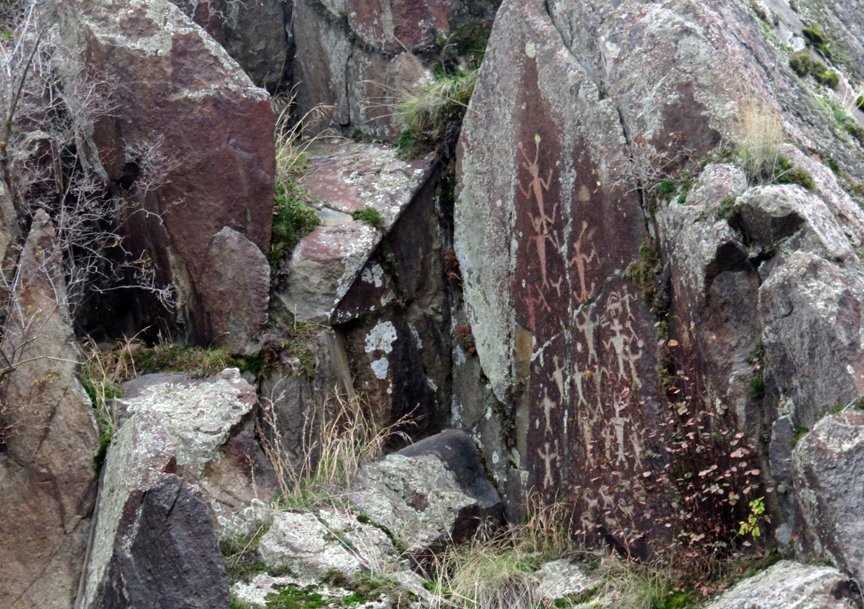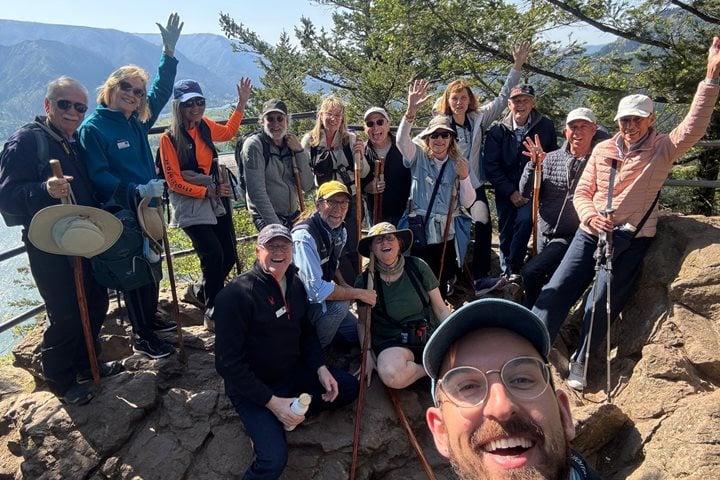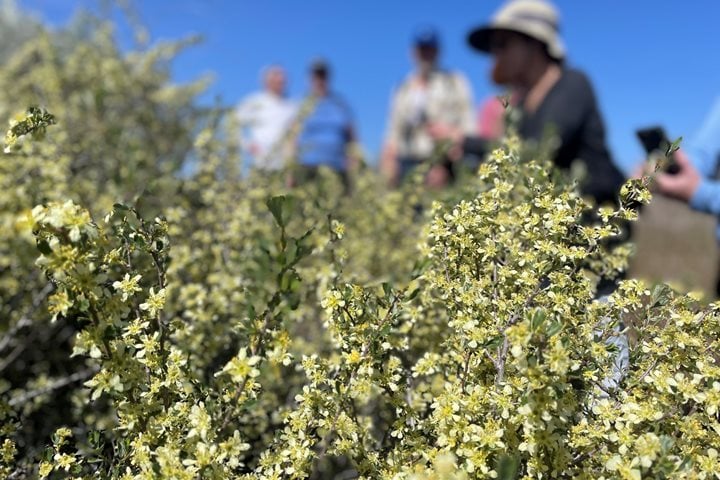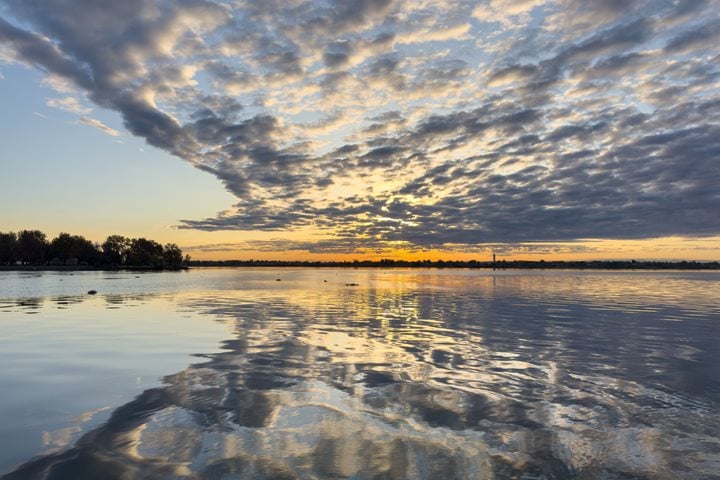On the first morning of our voyage we left the National Geographic Sea Bird on the dock at Clarkston, Washington, and boarded jet boats for an exciting journey into Hells Canyon. Rugged and remote, Hells Canyon is the deepest river-cut canyon in North America; here the Seven Devil Mountains rise as high as 8,000 feet above the Snake River. As we left Clarkston we saw Canada geese, mallards, and American coots foraging along the river shore. A special treat was a quick view of a pair of colorful wood ducks on the river’s edge.
Our first stop was across the river from Asotin (Place of Eels), Washington. Here we marveled at the most amazing outcrop of columnar basalt where perfect hexagonal columns rose above the river. Our next stop was at Buffalo Eddy to see an enigmatic petroglyph, a number of figures chipped into stone long ago and not fully understood today. Soon after this interesting stop, we spotted a small herd of Rocky Mountain bighorn sheep on the steep hillside above the river and we stopped for a good look at these beautiful creatures. It is rutting season and a magnificent ram with heavy and curved horns was with a herd of ewes and a younger ram.
As we proceeded on up the river, high cliffs formed of layer after layer of basaltic lava flows rose high above us. Fall colors brightened the landscape as mulberry trees burned bright gold along the shore and sumac smoldered crimson on the slopes. Great blue herons stood sentinel-like along the shores waiting to make a meal of any hapless fish that swim near them. A flock of perhaps a dozen wild turkeys foraged under a mulberry tree.
Soon we were passing the mouth of the Grande Ronde River, leaving the basalt flows and officially entering Hells Canyon and exotic terranes; exotic terranes are distinct pieces of land that have been added to the edge of the continent by tectonic processes. Now the rocky cliffs on either side grow even steeper and more rugged. At Cache Creek in Hells Canyon National Recreation Area we stop for our morning break and refreshments. There is a small museum here and in the yard an orchard of apple, fig, plum, and walnut trees—a green oasis among the usually parched hills. But now the October rains have come and green grass is shooting up all around. In the dried heads of sunflowers we saw an American goldfinch and western bluebirds flitted about in some shrubbery near the riverbank.
As on we went we kept an eye out for wildlife and came across a mule deer buck with three does. Soon we arrived at the mouth of the Salmon River, the legendary “River of No Return”. We learned that the pale sandy beaches we have been passing are formed of sand carried into the Snake by the Salmon River. This sand sparkles with flakes of white mica that comes from granitic rocks through which the Salmon River has passed in Idaho. Not too much farther upriver we came to the narrowest part of the Snake River—only about 45 feet wide here and the shining river is rushing through in a rapids. This is our turn-around spot and we headed downstream to the Spring Creek Ranch, a Nature Conservancy property, for a hearty lunch. We dined on a large porch with views up and down the river. There was a large apple orchard here and in it a herd of mule deer. Our presence did not disturb them much and many photos are taken. On the way downriver we again spotted a herd of 16 or more Rocky Mountain bighorn sheep. They had moved upslope, but not too far for photos.
Back at the National Geographic Sea Bird, many of us take a motor coach to the Nez Perce National Historic Park and learn about the history and culture of the Nez Perce people—whose aid to Lewis and Clark and their Corps of Discovery was so important to the success of the expedition. At Recap we learned more—a lot more—about photography and our cameras from our photo instructor, Rich Reid. Following dinner our geologist, Grace, gave an overview of our trip into Hells Canyon and showed a film on the great Ice Age Floods in preparation for tomorrow’s visit to Palouse Falls.







